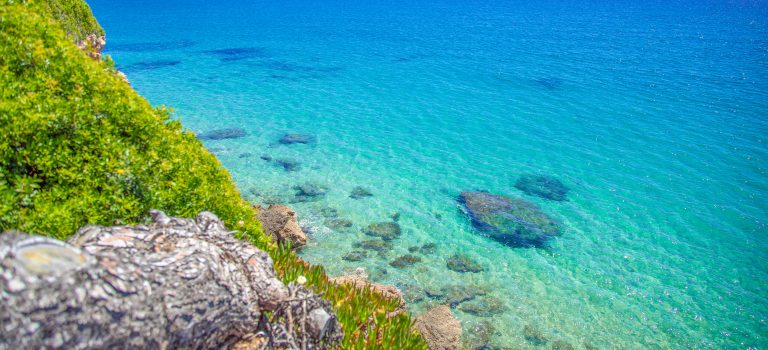THE NATURAL SECRETS
Shhh...
We have made a selection of the less known natural spaces of Mont-roig Miami but with a great biodiversity. Natural treasures, almost secret, for breathing real natural distances on the Costa Daurada.
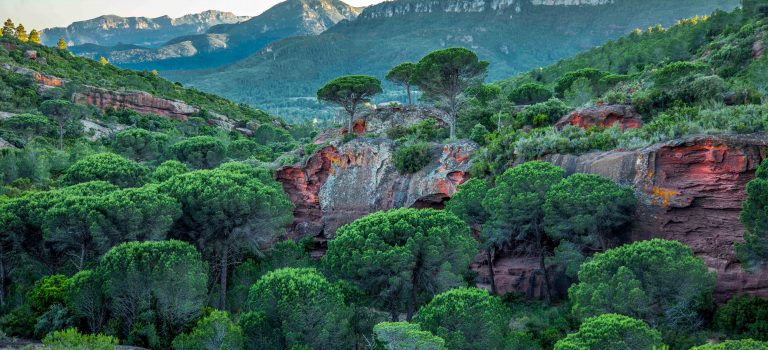

L'ARENY
The red country
The Areny mountain is a gift from nature. A visit there, gives you the feeling of being in a special, unique place. The rock’s red and the fanciful shapes transport you into a distant world.
It is a tiny Mediterranean treasure inhabited in prehistory and a source of inspiration for geniuses like Joan Miró. Few places in Catalonia have landscapes of such beauty and singularity thanks to the geology of the place and also to the vegetation growing there, which is associated to the rock formations. La Roca mountain is the location of the hermitage Mare de Déu de la Roca and it is integrated into the Areny mountain. L’Areny, 390 meters above sea level, is also a splendid viewpoint on the Costa Daurada.
On the almost 250 million years old Triassic materials of the Buntsandstein, containing clay and siliceous conglomerates, red soils have been formed which are of great geological and scenic interest. They are cliffs and stone blocks that due to wind and water erosion acquire unusual reliefs. In the 1940s, large quantities of red sand, the result of millenary erosion, were removed to be used for glass crafting.
The natural vegetation is very different from that in neighbouring mountains. Only species that can withstand the rock’s acidity are able to develop in these siliceous soils. An example for this is the coastal holm oak, which is quite common in the Areny, the cork oak, that grows in some places, the needle pine woods, which like to be at the bottom of the Areny, as well as bushes such as the very common mastic tree and the albaida, a rocky plant that flowers in spring forming large yellowish blankets. Notice how the siliceous soils are covered by vegetation that is associated to the rock’s acidity, while the calcareous soils are occupied by white pine forests. In addition, the Areny stands out for its huge variety of lichens, including some very rare species that are unique to Catalonia. Lichens are indicative of a good environmental quality.
The area’ s chromatism, composed of the red of the rock and its shadows, the green of the oak and pine forests and the yellow of the albaidas in spring, gives us a unique and singular landscape on the Costa Daurada. It has been classified as a Space of Natural Interest (PEIN) by the Generalitat de Catalunya.
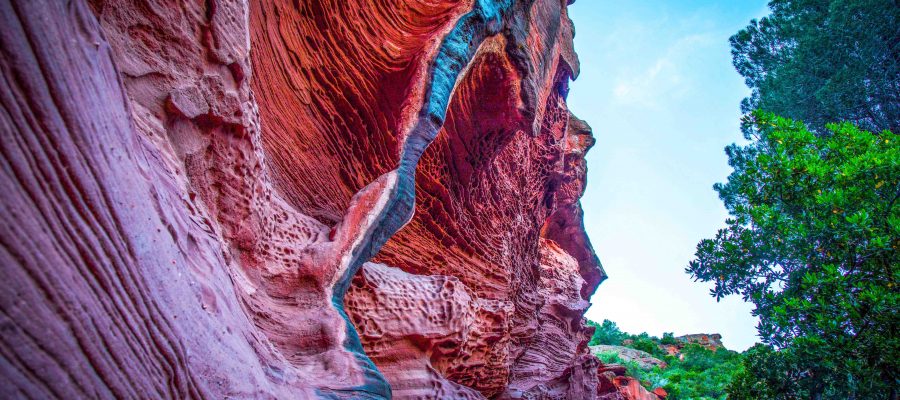
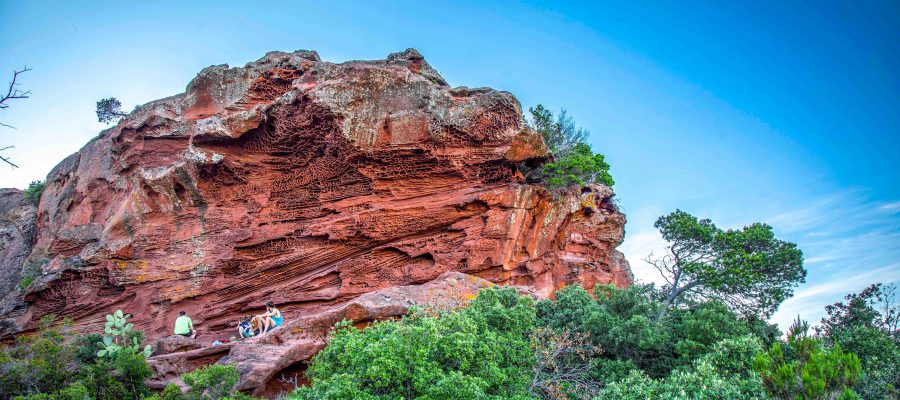
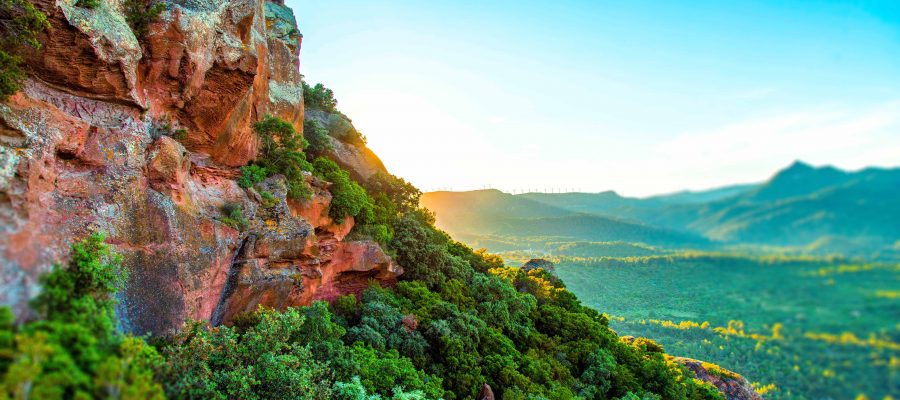
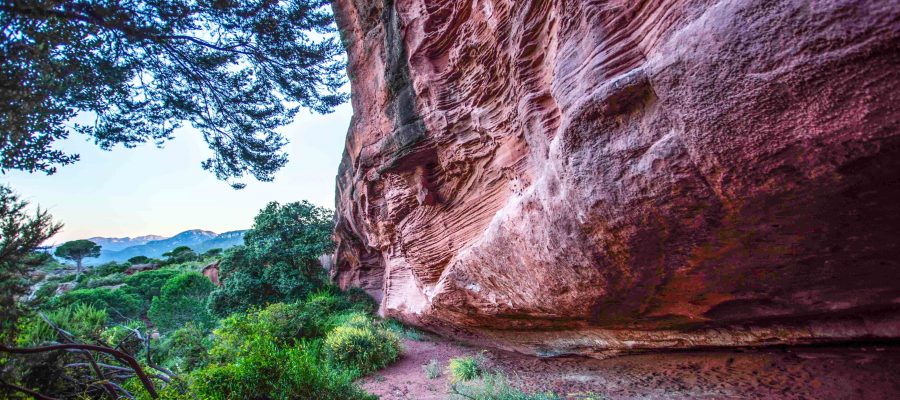
How to arrive?
We encourage you to discover this iconic area of the town through the long hiking route Mare de Déu de la Roca, seamen’s lighthouse starting in the village Mont-roig and passing by the Camí dels Carlins, les Escaletes, l’Areny, the Cova Foradada…a natural environment which is very dear to local people of Mont-roig del Camp!
IMPORTANT INFORMATION
For safety reasons, access to the Camí dels Carlins and other accesses to the Areny area have been prohibited due to the danger of a rocky mass falling from the Areny mountain.
You can find more information by reading the news published on the Mont-roig local council’s website, by clicking here.
Mont-roig Miami Turisme regrets any inconvenience this may cause.
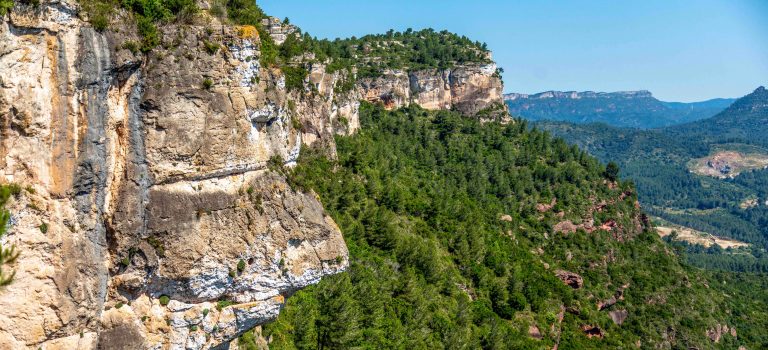

LA MUNTANYA BLANCA
The balcony of the Mediterranean
Muntanya Blanca “White Mountain” is Mont-roig’s highest point, it is a mountain range located as a buttress of its bigger sisters, Serra de Llaberia and Mola de Colldejou. At its highest point, Molló dels Quatre Termes, converge the municipal districts Pratdip, Colldejou, Vilanova d’Escornalbou and Mont-roig. From there we will enjoy privileged views over Mont-roig, the Areny mountain topped by the Hermitage Mare de Déu de la Roca and the Costa Dorada. You may also see the peaks of La Mola de Colldejou (922 m) and Miranda de Llaberia (918 m) where is located one of Catalonia’s 4 weather radars.
Muntanya Blanca owes its name to the limestone rock, where the typical karstification phenomenon happens. This is rock dilution, which causes the appearance of numerous caves and chasms, such as L’Avenc del Pla, near Molló dels Quatre Termes, about 31 metres deep.
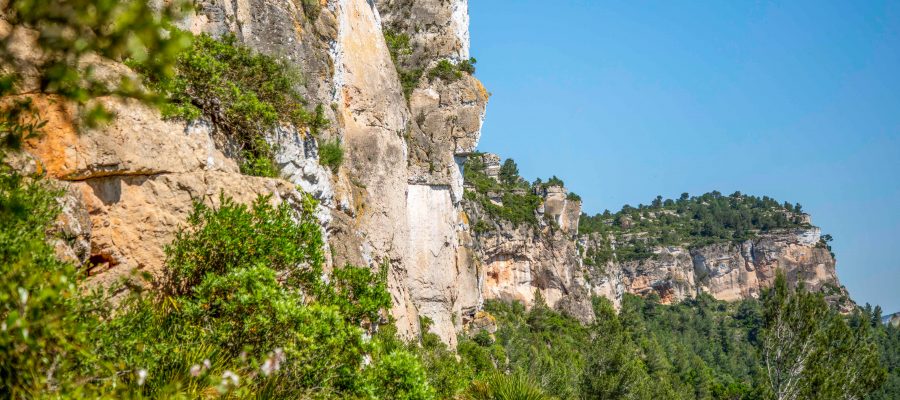
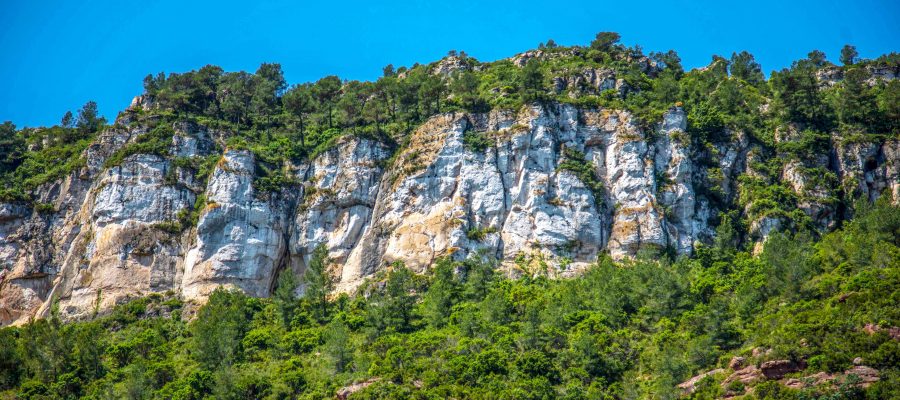
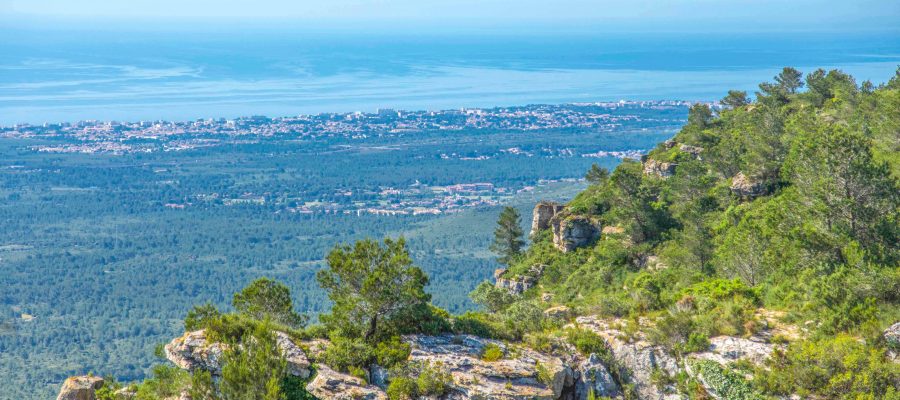
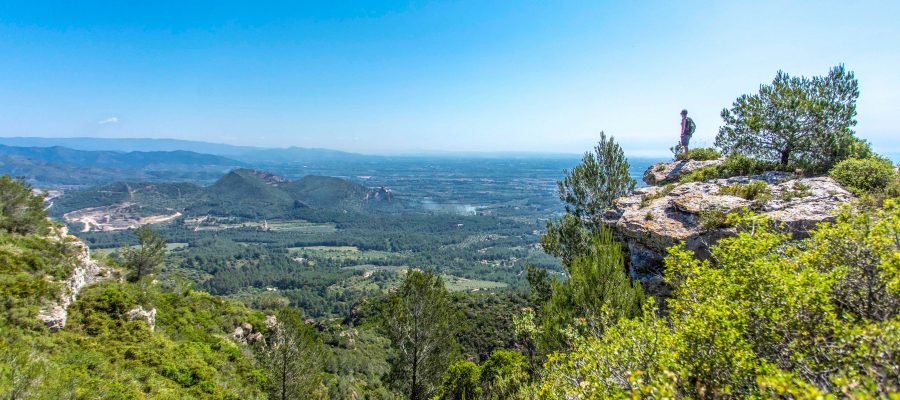
How to arrive?
Follow the hiking route La muntanya blanca, Mont-roig’s viewpoint. You should be a little fit, as there are some points where you must overcome some altitude defferences and the route is about 18 km long.
However, if you want to go up to the Molló dels 4 Termes and observe the exceptional panoramic views, you can do this in a matter of 40 minutes. Just leave the car where this route starts and you won’t get lost!
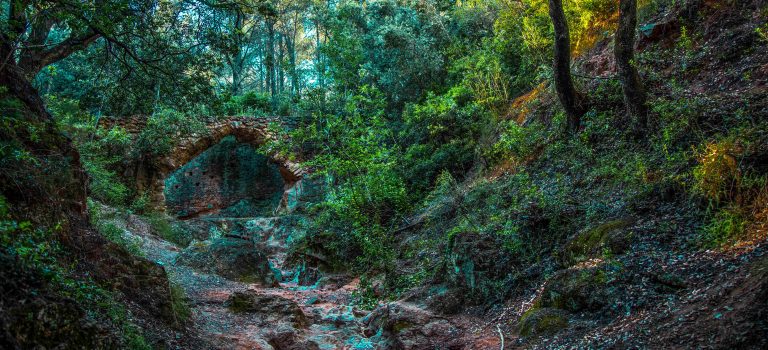

BARRANC DE LA MINA DE LES NINES
The Amazon of Mont-roig
The ravine has gradually eroded the soil and hollowed in, leading to growth of lush vegetation, thanks to the accumulated humidity, which is reminiscent of Amazonian ecosystems. In summer, with the coolness and shade of the ravine, it is perfect for a walk.
The coastal holm oak forest stands out among the vegetation. The holm oak brings us back to the past, a time when the whole plain of the Camp de Tarragona was filled with this species. Due to soil degradation and agricultural activity, today the white pine predominates in the landscape, this explains the biogeographical uniqueness of the Horta ravine.
Apart from its natural values, the Horta ravine stands out for its cultural importance related to the use of water. The Mina de les Nines passes through this area, nowadays it is disused, but there are still heritage remains that remind us of its former purpose. Following the suggested route, you will reach the Sunto ditch aqueduct, a subsidiary of the Horta ravine, where the Mina de les Nines used to brigde the ditch. Further on, you will come to another larger than the previous aqueduct bridge. It had a mixed task: it gave way and conveyed the water. The aqueduct bridge connected the left bank of the Horta ravine with the mouth of the Mina de les Nines.
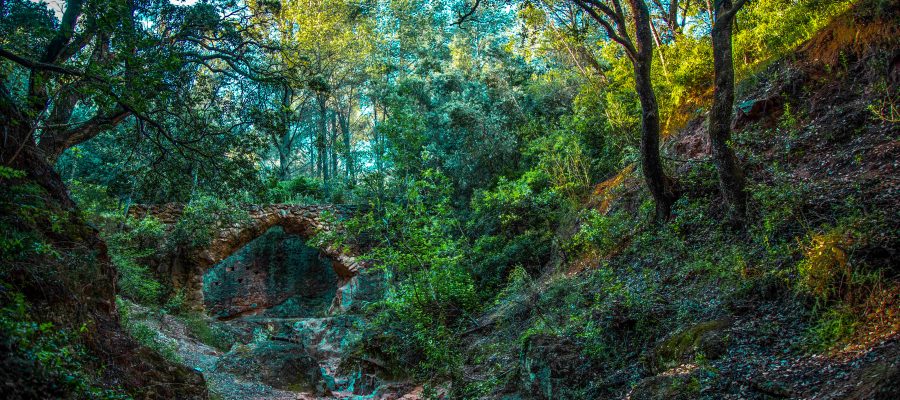
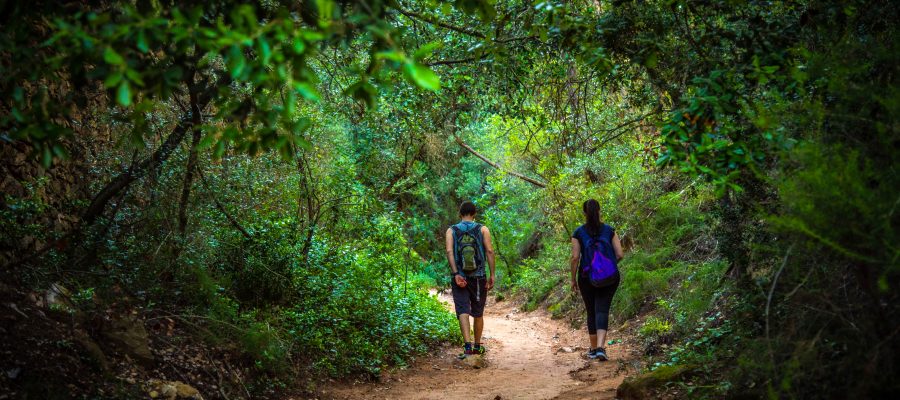
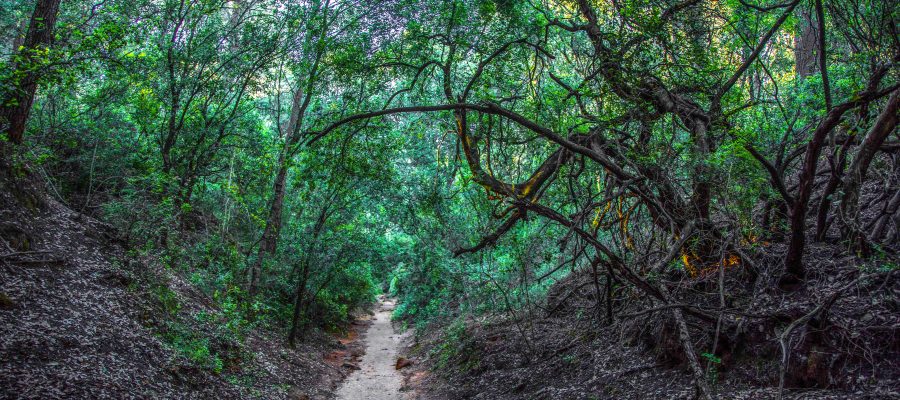
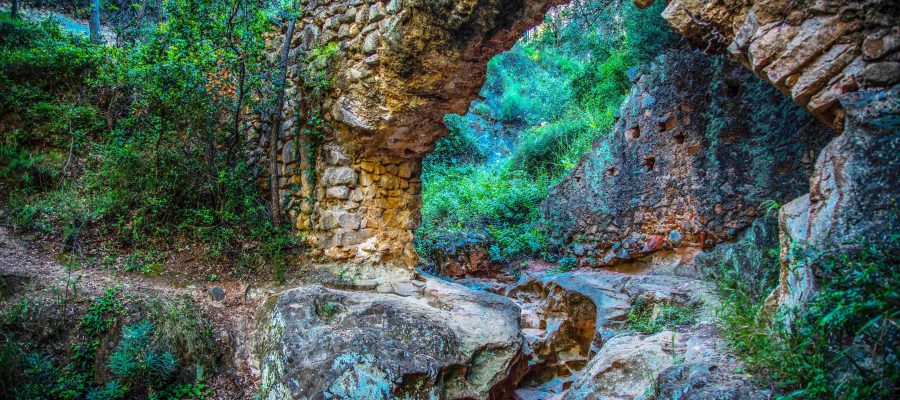
How to arrive?
To find the start of the Mina de les Nines ravine from the center of Mont-roig, you have to go to public laundry place, turning left following the Horta ravine until you find a crossroads with a lot of vegetation, and from here begins the stretch of the ravine of the Mina de les Nines. Click here and follow this route, you will reach the Hermitage!
Download this map and follow the green route, it will be useful.
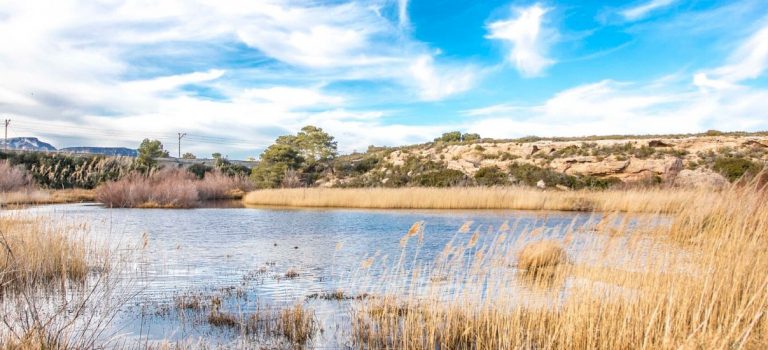

L'ESTANY GELAT
A natural oasis
This unique area is regularly visited by migratory birds and you can also find the fartet, a freshwater fish in danger of extinction. The vegetation is characteristic of this type of wetland area, including sea grass (Juncus maritimus) and salicornia arbustiva (Arthrocnemum fruticosum).
Both he Estany Gelat and the nearby creeks, used to be an important spot for smuggling, that is why one of the two carabineros’ checkpoints was installed on Mont-roig’s coastline. During the Anglo-Spanish war (1804-1809), Estany Gelat also witnessed a skirmish between the Spanish and British armies, as 25 British sailors stole a cart with supplies for the Spanish army and there was an exchange of fire in the area of Estany Gelat.
On one of the sides of the Estany Gelat, you may see the remains of a construction linked to the hunt that belonged to the Marquis of Marianao. The Estany Gelat ravine was the northern limit of the Marquis of Marianao’s hunting ground. Subsequently the preserve was sold and this is the beginning of Miami Platja’s foundation by the businessman Marcelí Esquius Garcia (1897-1969).
This enclave is situated at a crossroads: on one hand the GR92, that runs along Mont-roig’s and Miami Platja’s beaches and on the other hand, the short-distance footpath through the Estany Gelat ravine.
How to arrive?
L’estany Gelat is very easy to access, both on foot, by bike or by car. Clicking on the red dot on the map, will take you straight there. Are you ready to discover this rich-biodiversity pond? Connect with Mont-roig and Miami’s wildest nature!
B R E A T H E
